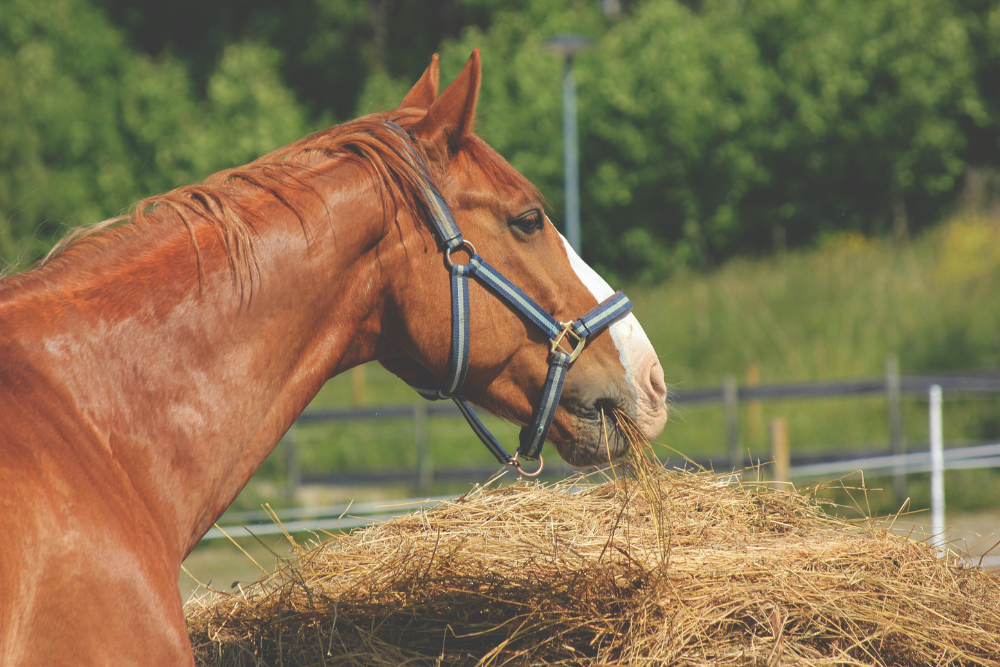Hay or Haylage: Which is most appropriate for my horse?

Written by Briony Witherow MSc RNutr. FHEA
There are no hard and fast rules that can be applied when it comes to predicting the suitability of a hay as compared to a haylage. It cannot be generalised that hay is of lower nutritional value in comparison to haylage, nor can it be said that haylage is always lower in water soluble carbohydrates (WSC – or sugars) as compared to hay.
Significant variation in the physical characteristics and nutritional content of hay or haylage exist due to various environmental factors including growth stage (maturity) at point of harvest; time of day grass for hay or haylage is cut, grass species, soil fertility and light intensity. As such, even forage crops taken from the same field can differ if for example, one is cut in the morning and the other in the afternoon. Likewise, maturity of the grass at point of harvest is a key contributing factor – while we often assume that a haylage will be more digestible (higher in calories) than hay, point of harvest is pivotal here. For example, a late cut (more mature) haylage can in fact be less digestible (i.e. lower in calories) than an early cut hay. Ultimately, this is why we often depend on forage analysis for more accurate guidance.
A notable difference when comparing a hay and haylage product is the dry matter content (how much moisture it contains), hay having a much higher dry matter (i.e. less moisture) than haylage. It is this high dry matter that brings with it most of the drawbacks associated with feeding hay; typically, less hygienic with a higher respirable particle (dust and spore) content. Traditionally, this potential for superior hygiene is why haylage was chosen in preference to hay when feeding performance horses.
The high dry matter of hay also brings one of its biggest advantages. With little moisture to dilute the nutrients, hay can be fed at reduced volumes in comparison to haylage, where much of the added weight is simply water. For example, haylage that is 50% moisture, 50% dry matter, essentially has diluted nutrients, meaning that you would need to feed 1.5 times the weight of this haylage as compared to most hays. This may contrast with what many believe about haylage – the common perception being that haylage is ‘richer’ than hay and therefore needs to be fed in smaller quantities. While haylage certainly can be richer or more digestible than hay (being cut at a less mature stage), these nutrients are diluted. As such, to meet minimum fibre requirements, often more kilograms of haylage need to be fed as compared to hay.
The higher moisture content of haylage may lead many to assume that this forage product therefore contains no respirable particles. While at a lower level than hay, haylage does still contain respirable particles (dust, bacteria and mould), are therefore are not always automatically more hygienic than hay. Just like hay, haylage can be steamed to improve hygienic quality.
The increased popularity and availability of high temperature forage steamers has afforded more flexibility in our feeding of hay. Steaming allows hay to be fed with much improved hygiene (and palatability), where in some cases they may have been unsuitable to feed.
Top Tips for Decision Making:
- Hay or haylage can often be suitable for a variety of horses. It is important not to automatically rule out one or the other based on preconceived ideas.
- Choice of forage should not only be based on which type of forage may be most suitable, but also what forage you can reliably source of good consistent quality.
- As the largest proportion of our horse’s diets, knowing more about where we are sourcing our forage from and what questions to ask from the provider is key in ensuring we make the best feeding decisions.
- Once you’ve made your decision, always remember to properly transition you horse from one forage to another –even if it is just a different batch of hay or haylage. Changes in forage are reported to result in a greater risk of colic than changes in concentrate feed.
